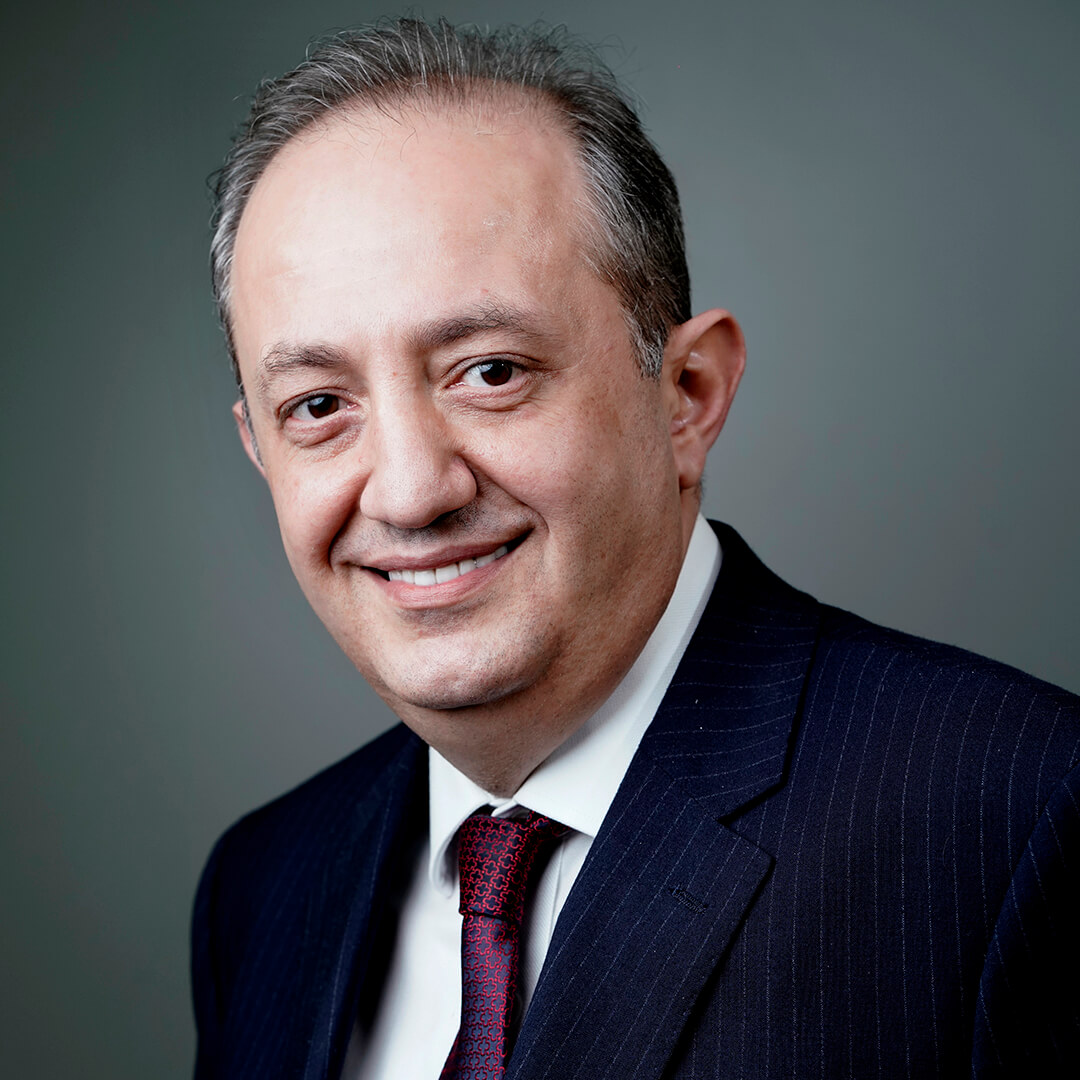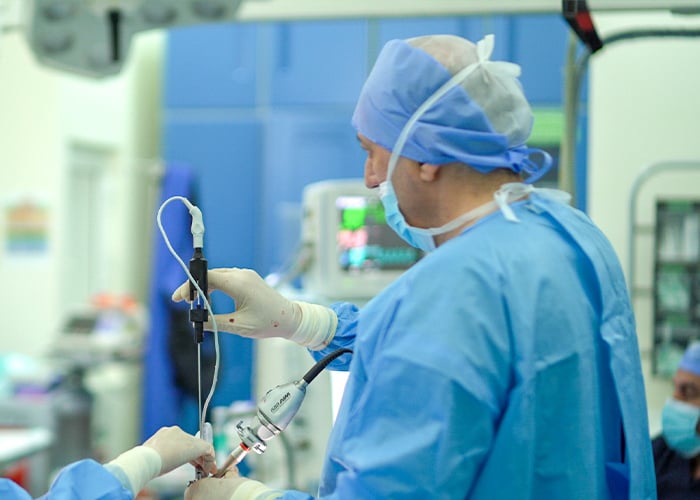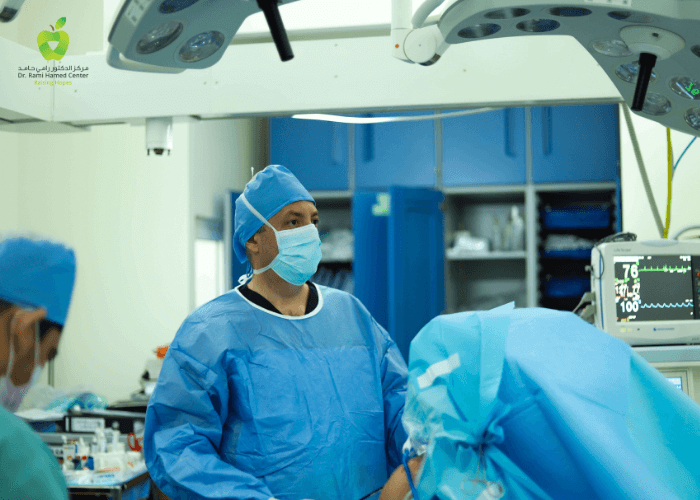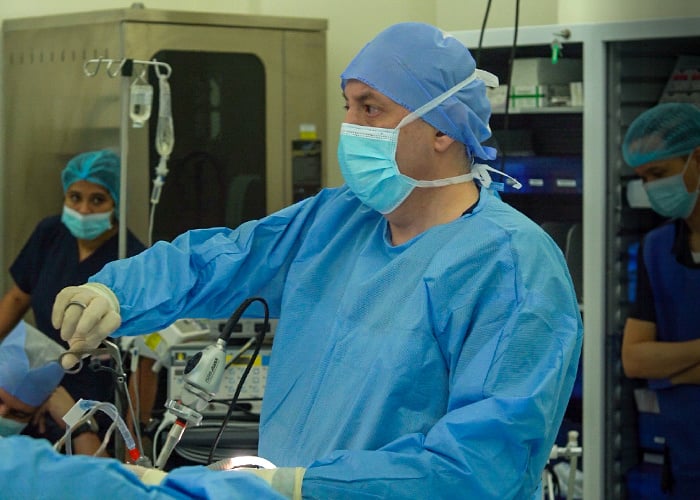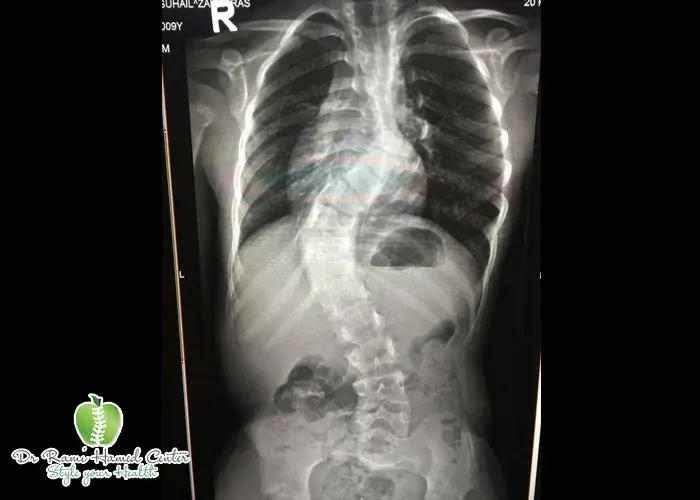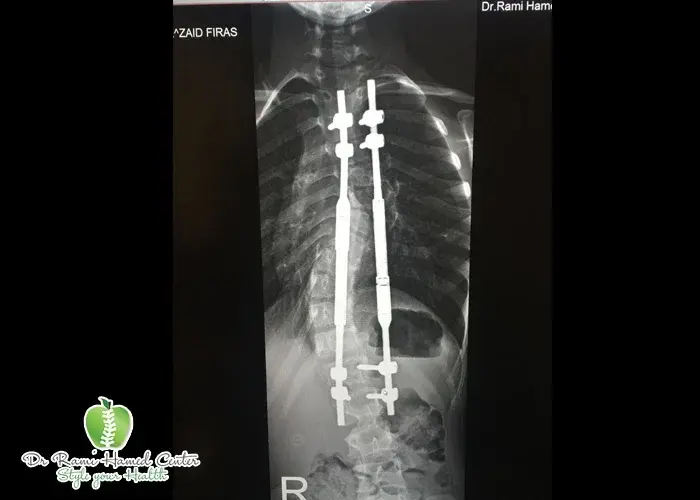Scoliosis / Kyphosis - Spine Hospital DRHC Dubai
Spinal deformities, including Scoliosis and Kyphosis, are a major concern to individuals of all age groups, as deformities can be congenital or develop during childhood, adolescence, adulthood, and the elderly stages. DRHC offers you one of the best Scoliosis Specialists in Dubai.
We, at Dr. Rami Hamed Center in Dubai, follow an approved international approach when dealing with scoliosis surgery and spinal deformities. In our Dubai Scoliosis clinic, we do not concentrate purely on the cause, but we extend beyond and study carefully all associated factors, including age, age of onset, rate of progression, spinal deformity, functional disability scoring, before we make the correct decision of a management plan.
What is Scoliosis?
Scoliosis is a spinal deformity in which the spine appears in a C or S shape in the coronal plane. It is, in fact, a 3-plane deformity, but let us keep it simple here.
Scoliosis Symptoms and signs:
Most of the time, there are no symptoms at all; it is merely noticed by a member of the family that the trunk, shoulders, or breast is not symmetrical. These are the most noticeable features. The expert eye will look into other associated features of scoliosis on examination, and these may be relevant to management lines.
Scoliosis and pain:
Most scoliosis deformities are pain-free unless it is caused by specific pathology or lead to significant degeneration of the spine. Painful scoliosis needs more thorough and detailed frequent assessment than non-painful scoliosis.
Scoliosis risks on neural elements:
The spinal cord and the extremities nerves are all passing through the spinal canal; therefore, there is always a risk of neural involvement, including weakness in the limb, bladder dysfunction, and paraesthesia. But!! The good news is that nerve injury is rare and does not happen suddenly, and there is always a chance to recover these back to normal if treated at the right time.
Scoliosis progression:
We always notice the family member's apprehensive faces when they ask the question of how much the scoliosis will progress. It is, in fact, a very important question, which we have to answer clearly for a point of reference, and as we will base our scoliosis treatment plan on the expected risk and rate of progression. There is a huge documented experience and literature now about the rate of progression, which allows for clear, precise answers to all cases of scoliosis, and there is no more room for guessing or even giving a personal opinion. Yes, it is all agreed upon in the scoliosis surgeon’s society.
Types of scoliosis according to cause:
There are many ways to categorize scoliosis. I am trying to make it as simple as possible for descriptive reasons to the public:
- Congenital scoliosis: This type is present since birth, usually due to improper formation of the spine.
- Neurogenic (Neuromuscular) scoliosis: This type of scoliosis is usually related to neural disturbance, causing muscle imbalance and weakness, resulting in unequal forces on the spine, which causes a curve.
- Syndromic Scoliosis: This type is related to other complex diseases of the body's soft tissues, which are mostly genetically related.
- Idiopathic Scoliosis: This type is the most dominant type and usually has no particular cause, and has a tendency to be present in the same family members.
- Degenerative Scoliosis: This is part of the aging spine. Also, patients with arthritis, like Rheumatoid Arthritis, can experience disc deterioration that leads to degenerative scoliosis.
- Scoliosis and age: We (the surgeons) also divide scoliosis according to age, as this is very important to outline the treatment plan. We classify patients into onset age groups from birth to adulthood, taking into consideration the growing spine speed and deformity. The age groups are described in medical terms as infantile, juvenile, early-onset, adolescent, and adult scoliosis.
.png?width=281&height=59&name=bookanappointment%20(1).png)
Scoliosis Surgeons:
Scoliosis surgeons or orthopedic surgeons trained in spinal surgery, including deformity surgery. In the United States, some pediatric orthopedic surgeons deal with them, but in the UK and Europe, it is not within the subspecialty of pediatric orthopedics. It falls mainly under orthopedic spinal surgery.
Scoliosis in Dubai:
Is there anything different for scoliosis in Dubai?
Of course, nothing is different. This is only to guide you to read this information and to believe that our Dubai scoliosis doctor provides scoliosis surgical and non-surgical management at an internationally approved level.
Scoliosis's latest advances:
We will discuss this in more detail in a different chapter. But we should mention here the “MAGEC” rod magnetic system, which provided a revolutionary solution to early-onset scoliosis management.
We are proud to say it is available now in Dubai, and we did the first case in Dubai.



.png?width=1000&name=scoliosis%20(1).png)
.png?width=281&height=59&name=bookanappointment%20(1).png)
